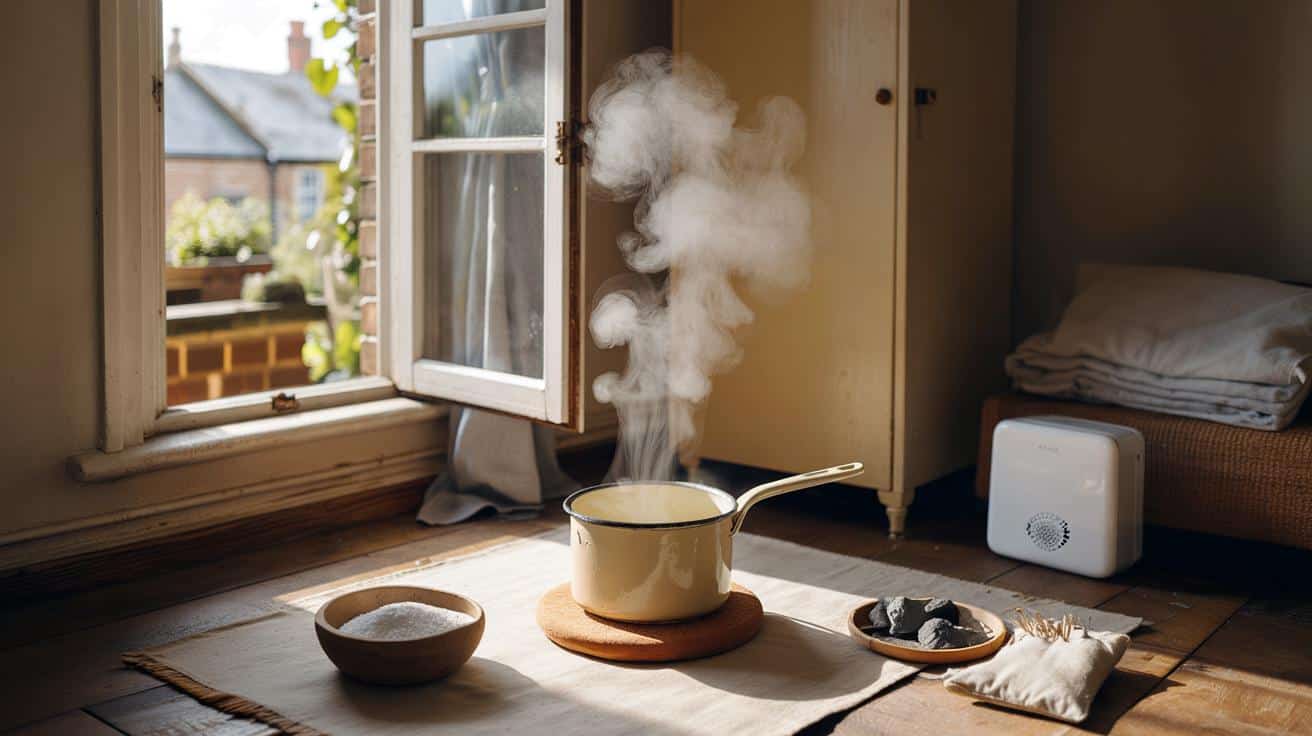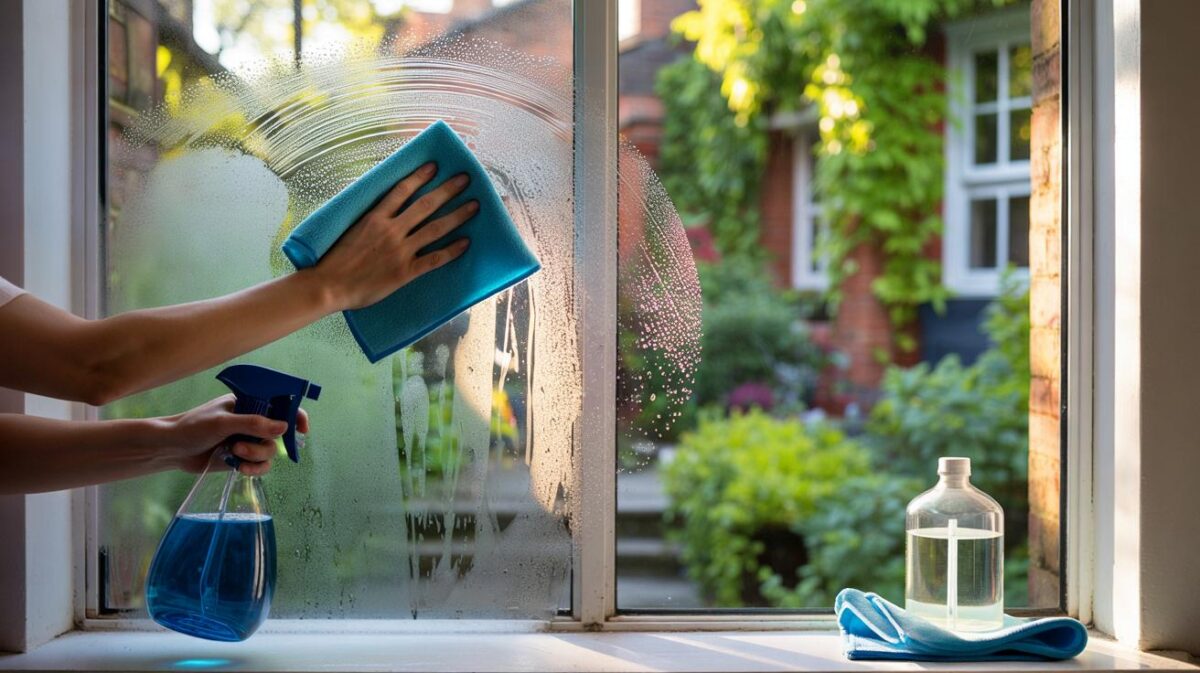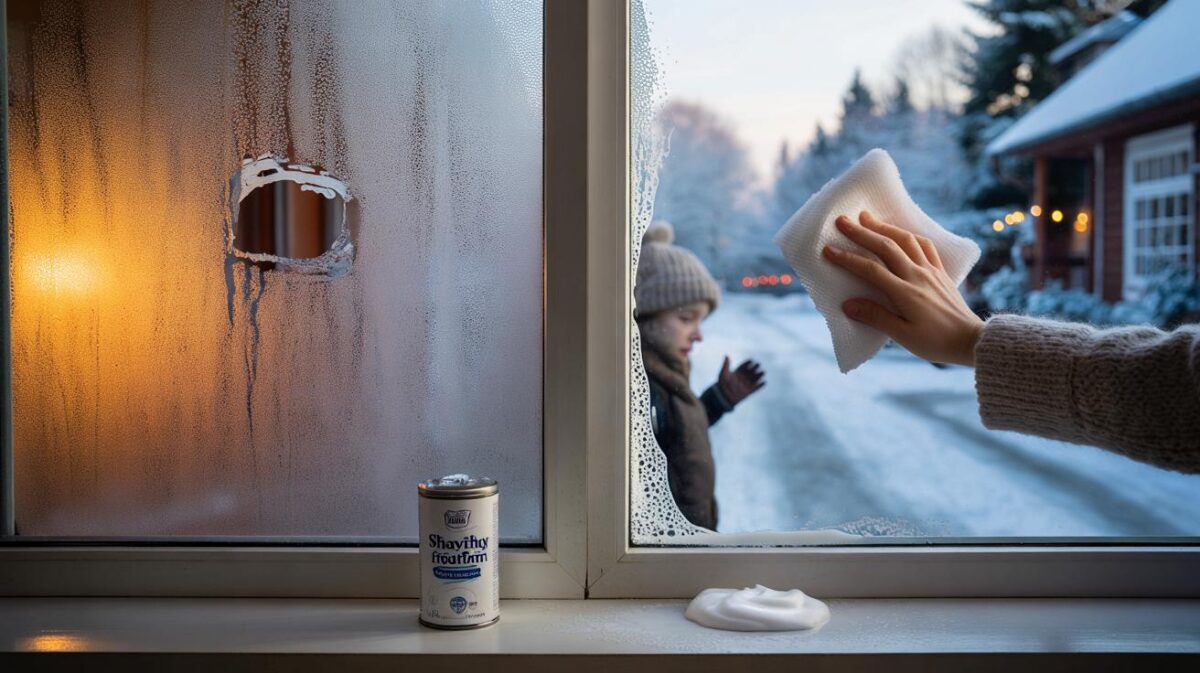From terraced rentals to coastal cottages, Britons report musty corners after closed-up weeks. A modest kitchen staple now leads the fight.
Why stale odours linger
Musty air thrives when humidity rises and ventilation stalls. Soft furnishings trap moisture. Dust and microscopic growth release faint, stubborn compounds. Cold spots behind wardrobes cause condensation. Laundry dried indoors pushes relative humidity up. Heavy fragrances pile on, then fade, leaving the same stale base.
Porous materials absorb smells and give them back slowly. Timber swells. Plaster cools and sweats. A room that sits sealed for days builds a miniature weather system with nowhere to go.
Aim for indoor humidity between 40% and 55%. Once you cross 60%, musty chemistry and mould risks increase.
The old-school trick making a comeback
Households are turning to a simple sequence that costs pennies and needs no perfume. It uses steam, acid, and fresh air.
- Put 200–300 ml of white vinegar in a small pan. Bring it to a bare simmer, not a rolling boil.
- Place the pan on a heatproof mat in the centre of the room. Crack a window. Close the door.
- Wait 15–20 minutes. Remove the pan. Open the window wide for five minutes to flush the space.
Simmer white vinegar for 15–20 minutes with a window on the latch, then air the room for five minutes.
The vapour neutralises lingering odours. The short burst of ventilation resets the room. You do not need to drown anything in scent.
How it works, chemically
White vinegar is a weak solution of acetic acid. Many stale smells have alkaline components. The acidic vapour helps neutralise them on contact. Steam lifts odour molecules from fibres and corners. The mild acidity also changes the air’s balance, which reduces the punch of musty compounds. This is a deodorising step, not a hospital disinfectant routine.
Where it helps—and where it fails
The method shines in closed guest rooms, box rooms, and rentals reopened after a trip. It can soften the smell of cupboards, trunks, and suitcase fabric. It helps after cooking or a rainy week with windows shut.
It will not fix live damp. If paint bubbles, skirting boards crumble, or black spotting spreads, you have moisture ingress or chronic condensation. Vinegar steam masks less and neutralises more than sprays, yet it cannot cure a leak, a blown seal, or a cold bridge behind furniture.
Wardrobes and trunks
Go gentle where fabric and timber meet. Use a small cup of bicarbonate of soda on a shelf to absorb odours. Drop a few pieces of activated charcoal in a dish for a month-long buffer. Slip whole cloves into a muslin sachet to scent linen without heaviness.
- For an overnight reset, place a saucer with a splash of vinegar on the floor of the wardrobe. Keep clothes covered. Remove and air in the morning.
- Rotate heavy furniture 2–3 cm off external walls to cut condensation behind it.
- Lift thick rugs for a sunny airing when the forecast turns dry.
A five-point plan for a fresher flat this week
- Run cross-breeze ventilation for 8–10 minutes each morning. Doors open. Two windows ajar.
- Do the vinegar steam once in the worst room. Repeat after a wet spell if needed.
- Measure humidity with a basic hygrometer and aim for 40–55% RH.
- Dry washing in one room with a window open, or use a heated rack and a dehumidifier setting.
- Clear 5 cm under doors and 2–3 cm behind wardrobes to let air circulate.
Numbers that matter
Keep wardrobes a hand’s width from external walls, ventilate for ten minutes daily, and act when humidity tops 60%.
| Method | Time needed | Best for | Watch out | Typical cost |
|---|---|---|---|---|
| Vinegar steam | 20–25 minutes including airing | Closed rooms, post-holiday reopenings | Avoid splashes on marble, limestone, waxed wood | Under £0.20 per session |
| Bicarbonate in a bowl | Overnight to one week | Wardrobes, shoe cupboards | Replace monthly for best effect | £1–£2 per month |
| Activated charcoal | One to four weeks | Bedrooms, trunks, cars | Recharge or replace as directed | £3–£8 per pack |
| Cross-breeze airing | 8–10 minutes daily | Every room, quick refresh | Close during pollen spikes if sensitive | Free |
| Coffee grounds, dried | One week | Kitchens, utility rooms | Replace before they clump | Free if reused |
Safety notes you must not skip
Never mix vinegar with bleach. Combining acids and hypochlorite can release dangerous chlorine gases.
Shield natural stone and lime-based materials from splashes. Use a stable trivet under hot pans. Keep pets and children away while the pan steams. If anyone in the home has asthma, keep ventilation gentle but consistent and skip heavy scents altogether. Test any method on a small, hidden area first.
Costs and savings
White vinegar usually sells for under £1 per litre. A single session uses about a cup, so pennies, not pounds. A gentle 15 minutes at a simmer on an electric hob can use around 0.2–0.3 kWh. At typical tariffs, that is roughly 6–9 pence. Scented sprays often cost £3–£5 and add fragrance without addressing the cause. A compact dehumidifier can draw 0.2–0.3 kWh per hour; used smartly in laundry spaces, it shortens drying time and reduces condensation across the home.
When to escalate
Rapid returns of musty odour point to a source. Check for a slow leak under sinks. Inspect silicone joints around baths and showers. Feel for cold patches on external walls behind furniture. Confirm that kitchen and bathroom extractors vent outside and actually move air. Persistent damp patches or spreading mould merit a professional survey and repairs before treating odours.
Practical add-ons that pair well
Use door trickle vents or window night latches to keep gentle airflow without a chill. Fit draught excluders under internal doors only after you ensure rooms still breathe. Swap heavy winter candles for an orange studded with cloves warmed by residual oven heat to scent lightly without smoke. Rotate bedding and curtains into daylight on breezy days; ultraviolet helps tame lingering smells.
Treat the cause, not just the aroma: ventilate, reduce moisture loads, then neutralise what remains.
A quick routine you can keep
Pick one room each week for a deeper reset. Do the vinegar steam. Vacuum edges and skirtings. Wipe window frames where condensation collects. Refresh a bowl of bicarb in the wardrobe. Note humidity morning and evening. Small, regular actions stop the slow build-up that makes guests pause at the doorway.








